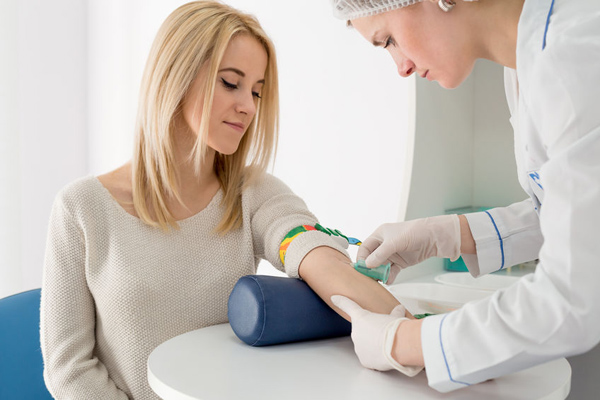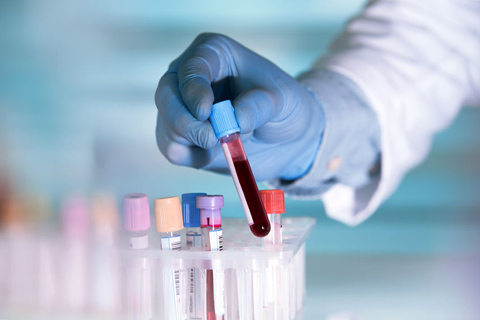Advances in Varicose Vein Treatment
Varicose veins, those unsightly bulging veins that can appear on our legs, are not only a cosmetic concern but also a health issue for many. Fortunately, the field of varicose vein treatment has seen significant advancements, making procedures less invasive and recovery times faster. Let’s explore some of the latest developments.
Minimally Invasive Treatments
Gone are the days when treating varicose veins meant a long and painful recovery. The evolution of varicose vein treatments has led to methods that are far less invasive. Today, patients can benefit from injections and catheter procedures that effectively shut down problem veins with minimal discomfort and downtime.
Ultrasound Waves: The Future of Treatment?
A particularly exciting development is the use of focused ultrasound waves. This innovative approach, which is still under study, promises to ‘zap’ away varicose veins without the need for incisions or sedation. If proven effective, it could revolutionize the way we treat this common condition.
Vein Stripping for Severe Cases
While new treatments are less invasive, vein stripping remains the gold standard for more severe cases. This surgical procedure involves the removal of the affected vein and, despite being more invasive, offers the best long-term results for patients with advanced varicose veins.
The Importance of Prevention and Early Treatment
Preventing varicose veins or treating them early can stave off a host of complications. These include leg swelling, skin discoloration, and even painful skin ulcers. Simple lifestyle changes and early medical intervention can make a significant difference in outcomes.
Ultrasound Evaluation: A Critical Step
An ultrasound evaluation is a critical step in the treatment process. This non-invasive test allows doctors to examine the deeper veins in the leg, ensuring that they function properly and identifying the best course of treatment for each patient.
In conclusion, the advances in varicose vein treatment offer hope and improved quality of life for those affected by this condition. With ongoing research and technological improvements, we can expect even more effective and patient-friendly treatments in the future.
-
- [https://www.health.harvard.edu/diseases-and-conditions/advances-in-varicose-vein-treatment]
Global impact and contributing factors in varicose vein disease development
Understanding the Global Impact of Varicose Veins and Contributing Factors
Varicose veins are a global health concern, affecting millions of individuals across the world. Characterized by their bulging appearance, these veins are more than just a cosmetic issue; they can lead to discomfort and significant health problems, particularly in women who are disproportionately affected.
Beyond Genetics: The Role of Lifestyle and Environment
While genetics play a role in the development of varicose veins, with a family history increasing the risk, it’s crucial to recognize the influence of lifestyle and environmental factors. Prolonged periods of standing or sitting, excessive weight, and aging are all contributing factors to the onset of varicose veins. These elements can cause increased pressure in the leg veins, leading to the characteristic bulging and twisting.
Socioeconomic Status: A Surprising Contributor
Recent studies have brought to light an intriguing correlation between socioeconomic status and the prevalence of varicose vein disease (VVD). Lower income levels may be associated with a higher risk of developing varicose veins. This connection underscores the importance of considering a wide range of global factors when addressing this condition. It suggests that socioeconomic factors, possibly linked to reduced access to healthcare or occupations that require prolonged standing, could influence the development and severity of VVD.
The Path Forward: Prevention and Improved Treatments
Understanding the multifaceted causes of varicose veins is key to developing effective preventative strategies and enhancing treatment options. By acknowledging the impact of both genetic and socioeconomic factors, healthcare providers can tailor their approach to prevention and care, ensuring that individuals at higher risk receive the attention they need.
In conclusion, varicose veins are a complex condition with a diverse range of contributing factors. As we continue to explore these influences, we can better equip ourselves to combat the global challenge they present, improving the quality of life for those affected.
[https://www.ncbi.nlm.nih.gov/pmc/articles/PMC9425889/]
Evidence for varicose vein treatment: an overview of systematic reviews
The Evidence-Based Approach to Varicose Vein Treatments
Varicose veins are more than a cosmetic concern; they can cause significant discomfort and swelling, impacting the quality of life for many. As a vein care clinic committed to providing the latest and most effective treatments, we believe in the power of evidence-based medicine. This blog post delves into the findings from systematic reviews on varicose vein treatments, offering insights into the effectiveness of various interventions.
Systematic Reviews: A Methodology for Clarity
Systematic reviews serve as a cornerstone for evidence-based practice, analyzing and summarizing data from multiple studies to provide a clear picture of treatment effectiveness. By conducting a comprehensive search for systematic reviews on varicose vein treatments, researchers can assess a range of interventions, from conservative methods like compression stockings to surgical options.
Compression Stockings: Questioning the Conventional
Compression stockings have long been a go-to method for managing varicose veins. However, recent systematic reviews suggest that the evidence supporting their effectiveness, especially as a standalone treatment, is not as robust as once believed. This revelation prompts a reevaluation of their role in varicose vein management.
Minimally Invasive Procedures: The Emerging Front-Runners
The landscape of varicose vein treatment is shifting towards minimally invasive procedures. Techniques such as endovenous laser therapy, radiofrequency ablation, and foam sclerotherapy have shown promising results. These interventions are celebrated for their safety and efficacy, offering patients relief with fewer risks and shorter recovery times.
However, it’s important to note that the studies evaluating these techniques vary in quality, with many falling into the low to moderate category. This underscores the necessity for ongoing, high-quality research to reinforce the evidence base supporting these treatments.
The Path Ahead: High-Quality Research for Solid Evidence
As a clinic at the forefront of vein care, we recognize the importance of high-quality research in advancing treatment options. The current evidence points to the potential of minimally invasive procedures, but further studies are essential to confirm their long-term effectiveness and safety.
In conclusion, our commitment to evidence-based treatment ensures that we offer our patients the most reliable and effective care for varicose veins. We will continue to monitor the latest research developments and adapt our practices to provide the best outcomes for those we serve.
Endovascular Laser Therapy for Varicose Veins
Endovascular Laser Therapy: A Modern Solution for Varicose Veins
Leg pain is a common ailment that affects a significant portion of the population. Among the various causes of leg pain, varicose veins stand out as a condition that not only causes discomfort but also concerns due to their appearance. In our vein care clinic, we are dedicated to providing the latest treatments for varicose veins, and one of the most promising is Endovascular Laser Therapy (EVLT).
The Challenge of Diagnosing Leg Pain
Diagnosing leg pain can be complex due to the myriad of potential underlying conditions. It requires a thorough history and physical examination to identify the source of discomfort. Healthcare professionals must consider the nature, location, duration, and severity of the pain, along with any factors that may aggravate or relieve it. A patient’s medical history, risk factors, medications, and activities are also crucial in forming a complete picture.
A Structured Approach to Evaluation
After gathering a detailed history, a comprehensive physical examination is essential. This includes inspection, palpation, and assessing the range of motion in the affected leg. Evaluating tendons, ligaments, muscles, and blood vessels through specific maneuvers is vital. Neurological testing may also be conducted to assess nerve function and identify potential nerve involvement.
When Additional Diagnostic Tests Are Needed
In some cases, further diagnostic tests such as X-rays, ultrasounds, blood tests, or MRI scans may be necessary, depending on the suspected cause of the leg pain. These tests help healthcare professionals diagnose the underlying cause of leg pain accurately and develop an appropriate treatment plan.
The Role of Endovascular Laser Therapy in Treatment
Endovascular Laser Therapy (EVLT) is a cutting-edge treatment for varicose veins that offers a minimally invasive alternative to traditional surgery. This procedure uses laser energy to close off the affected veins, rerouting blood flow to healthier veins. The benefits of EVLT include a shorter recovery time, minimal discomfort, and excellent long-term results.
Why Choose EVLT?
EVLT stands out for its effectiveness and safety. It is performed under local anesthesia and typically requires no hospital stay. Patients can return to their normal activities shortly after the procedure, making it an ideal treatment for those seeking a quick and efficient solution to varicose veins.
In conclusion, Endovascular Laser Therapy represents the forefront of varicose vein treatment. It aligns with our clinic’s commitment to providing state-of-the-art care for our patients. If you’re experiencing leg pain due to varicose veins, we invite you to explore this innovative treatment option with us.
[https://www.ncbi.nlm.nih.gov/pmc/articles/PMC3377531/]



